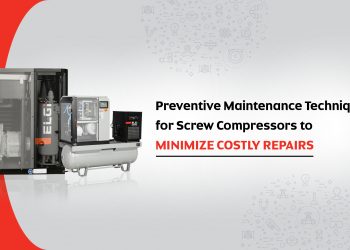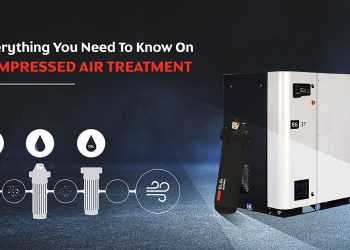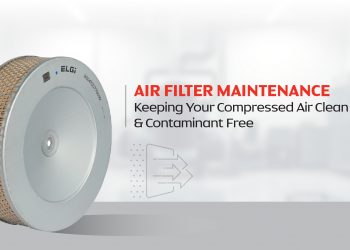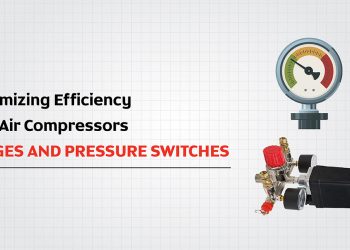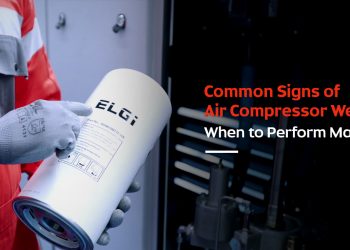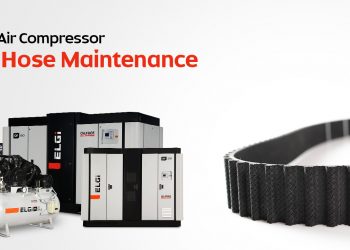Ultimate Guide: Tips for Effective Maintenance of Air Accessories in Your Compressor System
The air compressor is a critical investment for all manufacturing plants. It is important to take care of the quality of the air, and part of this is ensuring that you select the right accessories to improve the performance of the compressor and the quality of air for the end user.
Listed below are the accessories that improve a compressor’s performance:
- Airmate filters
- Air Receivers
- Condensate drains
- Air dryers
How to maintain Airmate filters:
Compressed air is not naturally clean. It likely contains vapour and tiny particles like aerosols that can be found in the natural environment. If the air is contaminated it will cause problems for the application in question.
The filter’s job is to remove contaminants from compressed air. The type of filter varies depending on the application. Generally, the broad types are coalescing filters, vapor removal filters, and dry particulate filters.
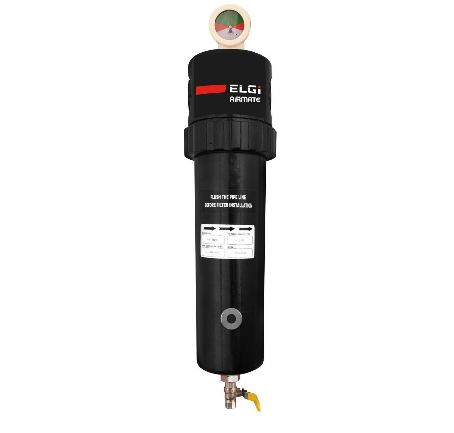
Why Clean Filters?
Filter cleaning is a preventive maintenance task that can save time and money and ensure trouble-free operation in the long run. Dirty filters can reduce the system's airflow, pressure, and quality, leading to poor performance, high energy consumption, and lower output. By cleaning the filters regularly, we can prevent the above problems and ensure the system works smoothly and reliably.
How often should filters be cleaned?
Filters are essential components of compressed air systems. They help to remove contaminants, improve efficiency, and extend the lifespan of equipment. Filters should be cleaned and maintained regularly to achieve optimal performance and to avoid clogging, damage, or malfunctioning.
The frequency of filter cleaning depends on several factors, such as type, contamination level, operating conditions, and manufacturer recommendations. You should check the filters at least once a month and clean them whenever they look dirty or clogged. However, some filters may require more frequent cleaning, depending on their specific characteristics. Air mate filters should be cleaned or replaced every 6 to 12 months based on the application and dust accumulation.
How to clean the filters?
To ensure proper and safe cleaning of the filters, you should follow the instructions provided by the manufacturer. While some general steps apply to most filters, different filters may require varying methods. These include turning off and disconnecting the system from the power source and compressed air system. Then, remove the filters and inspect them for any signs of damage or wear. After this, use low-pressure air to remove loose dirt or debris and thoroughly check the filters before reinstalling them into the system. Lastly reconnect the power source and compressed air system to evaluate for any leaks or malfunctions.
What are the benefits of cleaning filters?
Regularly cleaning filters can offer a variety of advantages, such as improved performance and efficiency, reduced risk of breakdowns or repairs, and cost savings on energy bills or maintenance. This is possible because clean filters allow better airflow, pressure, or quality while preventing clogging, damage, or malfunction of the compressed air system or its components. This lowers energy consumption and extends the lifespan of the system or its parts.
What are the risks if the filters are not cleaned regularly?
If the filters are not cleaned regularly, it might lead to a reduction in the performance and efficiency of the system. It may also increase the chances of breakdowns, due to which you may have to spend more on repairs, energy bills, or maintenance.
Air Receiver Maintenance:
Air receiver safety is important for every industry. When the air receiver is operated at an unsafe pressure or isn't maintained and stored properly, it can lead to failures.
An air receiver tank is a type of pressure vessel that stores pressure for a prolonged period. If the air receiver tank is not maintained properly, it can lead to corrosion, stress, or fatigue- which may increase chances of tank failure.
An air receiver tank failure is extremely dangerous. The high internal pressures inside the tank can cause it to rupture with explosive force if the reliability of the tank is compromised.
For industrial applications, the air receivers need to be certified by the American Society of Mechanical Engineers.
The user must follow the following maintenance recommendations for the safe operation of the air receiver tank.
- Choose an air receiver that complies with local legal standards.
- Do not over-pressurize the tank; it will create damage or failure.
- The air receiver must have a pressure gauge that is working properly.
- Inspect the air receiver periodically for any signs of weld seams, cracks, thinning of the vessel walls, and other defects
- Use only a certified safety relief valve which is working properly.
- Use the auto drain valve to drain the accumulated water from the air receiver.
- Drain the accumulated water periodically and ensure ADV is in working condition.
- Inspect the air receiver blind hold cover to ensure that it fits perfectly.
- Inspect the air receiver grouting for any cracks and other defects.

Condensate Drains Maintenance:
The auto drain valve automatically drains the moisture from the collected bowl mounted in the moisture separator. It can also be installed below the air compressor/ air receiver and air dryer to drain the moisture collected in it. It has a mesh in the strainer that will filter dust/rust particles which can be cleaned from time to time.
- Check the automatic drainer every day and clean the filter inside regularly to avoid clogging and loss of drainage effect.
- Clean the drainer with water and detergent. Do not use gasoline, toluene, rosin, or other corrosive agents.

Air Dryer Maintenance:
A common type of air dryer used for compressed air systems is a refrigerated air dryer. The dryer removes water from the compressor air by cooling the air to approximately 3 °C (38 °F) and effectively condensing out the moisture in a controlled environment. 3 °C (38 °F) is the realistic lower limit for a refrigerated dryer because with a lower temperature you run the risk of freezing the separated water.
Air dryer maintenance checklist
- Check that all the main supply's electrical connections and the inside of the dryer panel are functioning accurately.
- Check any blockage in the line filters; remove the filters and inspect if they need to be replaced.
- Check the gas leakages in condenser coils and pipes. Use soap solutions to identify the leak and fix it.
- An air-cooled condenser can easily be blocked by the dust in the air, causing poor heat dissipation. So, clean it regularly. Spray it with compressed air or brush it with copper.
- Check the pressure gauge function. If required, replace it.
- Check the gas pressure of the refrigeration unit at the pressure gauge and top up the gas if needed.
- Check the ADV solenoid valve condition and its functioning.
- Check the exhaust fan condition and its functioning.
- Check if the temperature controller is working correctly.
- Restart and run the air dryer to observe the parameters.
- Check and observe noise. Is there any unusual nose in the air dryer?




